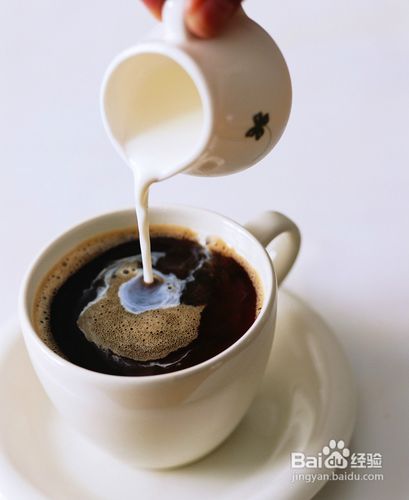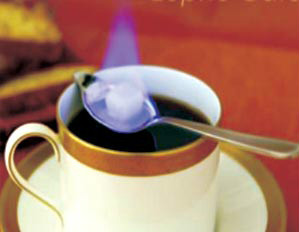Indonesian boutique coffee beans Kopi Luwak civet coffee introduction Kopi Luwak flavor and taste
Kopi Luwak "is the least produced coffee in the world. A bag of 50 grams of coffee beans is worth more than 800yuan. It can only make five cups of coffee." In other words, the price of a cup is about 200 yuan. The civet coffee gift box produced by Fireboat Group, Indonesia's largest coffee supplier, sells for 600,50g at Shangpin Cafe with extremely luxurious packaging, while the asking price for 100g is more than 2000 yuan, and the global annual output in the wild does not exceed 400kg. Today, villagers in these areas not only collect wild Rwaka feces, but also begin to raise Rwaka in captivity. Large pots of picked coffee cherries were placed in front of Rwaka, and the hungry Rwaka had no choice but to eat all the coffee cherries. The taste of Rwaka coffee produced in this way is naturally greatly reduced. "scarcity is precious", which has led to the high price of Kopi Luwak, a rare treasure. I'm afraid you'll have to prepare £50 for a cup of coffee, and you may not be able to find it everywhere.
★ A cup of coffee made from 12 grams of cat poop coffee powder sponsored by Fireboat Group at the 2010 Shanghai World Expo costs 380 yuan, which is limited to 12 cups a day in short supply.
★ in Bali, a cup costs more than 200,000 rupiah, equivalent to more than RMB 150.
★ in the United States, 1 kilogram of cat poop coffee beans is as high as USD 1200. It is always around USD 1000 in the international market.
★ in England, a cup costs 50 pounds (RMB 500).
Kopi Luwak processing process
Kopi Luwak processing process
In Indonesian, "Kopi" means coffee, and "Luwak" is the name commonly known by Indonesians as "civet". It is said that the coffee produces no more than 500 pounds a year, and the price per pound ranges from $300 to $800, depending on the year, because there is not a fixed production every year.
In the international market, Luwak coffee has always been a veritable luxury, and one of the main reasons is that it is not made by people but by wild animals. Traditionally, the coffee fruit is washed or sun-treated, removing the skin, pulp and sheep skin, and finally taking out the coffee beans, but Luwak coffee is made by natural fermentation in wild animals. What's more, these wild animals are found only on small islands like Indonesia, and their time and place are mysterious, and their number is decreasing day by day. Although Indonesia has claimed that the number of "civets" has rebounded steadily through protection and artificial feeding, the temptation of human taste buds, which depends on its digestive system, cannot be compared with products of the industrial era.
"civets" are omnivores. They are withdrawn by nature and like to walk at night. They live in tropical rain forests, subtropical evergreen broad-leaved forests, mountain thickets or hills, mountains and grasses below 2000 meters above sea level. Its food includes small beasts, birds, amphibians and reptiles, crustaceans, fruits and seeds of insects and plants. The civet likes to choose the most mature, sweet, juicy coffee fruit in the coffee tree as food, while the coffee fruit passes through its digestive system and is digested only by the pulp on the outside of the fruit. The hard coffee beans are then excreted intact by the civets' digestive system. This is the "natural fermentation method" that was once scoffed by Americans. It is said that when Americans heard about this way of making coffee, it was regarded as a fantasy, and it was not until it was reported by National Geographic that they became interested in it.

Important Notice :
前街咖啡 FrontStreet Coffee has moved to new addredd:
FrontStreet Coffee Address: 315,Donghua East Road,GuangZhou
Tel:020 38364473
- Prev

Tanzanian Coffee Flavor Taste Manor Introduction Tanzania Fine Coffee Beans Tanzania Coffee
Tanzanian coffee was first introduced by Christian neighboring Kenya and planted at the foot of Mount Kilimanjaro. Some coffee trees are more than 100 years old. The coffee industry in Tanzania used to be dominated by manor cultivation, but now more than 55% is cultivated by small farmers. Many small farmers form cooperatives, the most important of which is the Kilimanjaro Cooperative
- Next

Introduction to Peruvian boutique coffee beans in Peru, a coffee producer with a short history of growing coffee
Peruvian coffee cultivation history is not long, but as a rising star, Peruvian coffee is gradually opening up its popularity and entering the international market. Peru is located in western South America, with a coastline of 2254 kilometers. The Andes runs from north to south, and the mountains account for 1% of the country's area. it belongs to the tropical desert region with a dry and mild climate. Peruvian coffee is mostly grown at the foot of the Andes, where it is abundant.
Related
- Detailed explanation of Jadeite planting Land in Panamanian Jadeite Manor introduction to the grading system of Jadeite competitive bidding, Red bid, Green bid and Rose Summer
- Story of Coffee planting in Brenka region of Costa Rica Stonehenge Manor anaerobic heavy honey treatment of flavor mouth
- What's on the barrel of Blue Mountain Coffee beans?
- Can American coffee also pull flowers? How to use hot American style to pull out a good-looking pattern?
- Can you make a cold extract with coffee beans? What is the right proportion for cold-extracted coffee formula?
- Indonesian PWN Gold Mandrine Coffee Origin Features Flavor How to Chong? Mandolin coffee is American.
- A brief introduction to the flavor characteristics of Brazilian yellow bourbon coffee beans
- What is the effect of different water quality on the flavor of cold-extracted coffee? What kind of water is best for brewing coffee?
- Why do you think of Rose Summer whenever you mention Panamanian coffee?
- Introduction to the characteristics of authentic blue mountain coffee bean producing areas? What is the CIB Coffee Authority in Jamaica?

